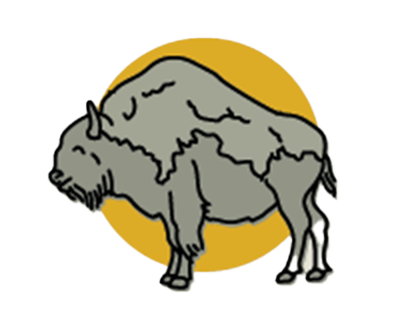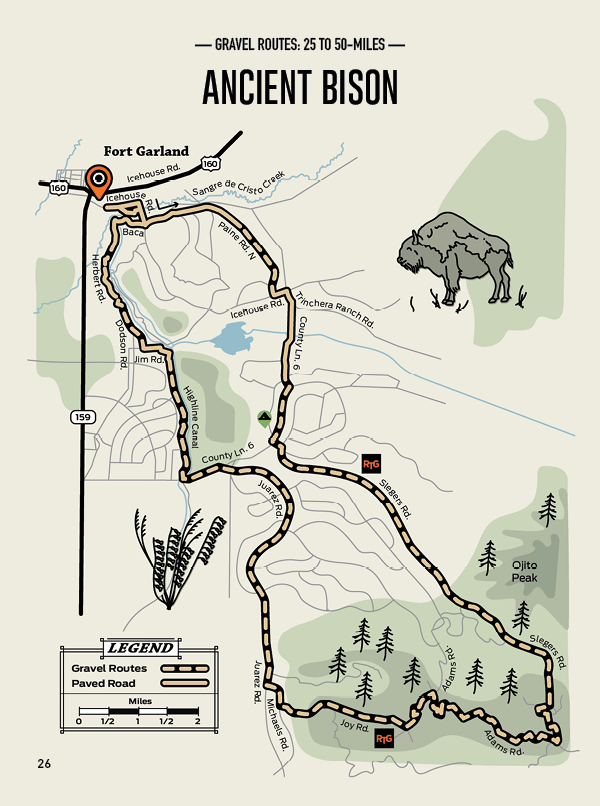- Home
- /
- Gravel Adventure Field Guide
- /
- Fort Garland
First established as a military fort in 1858, Fort Garland sits at the eastern end of the valley near La Veta Pass. It served as an outpost that protected settlers from Native American attacks as tensions grew in the 19th century. Among the soldiers stationed at Fort Garland were the famous African American Buffalo Soldiers of the U.S. 9th Cavalry regiment. They arrived after the Civil War paved the way for the first railroad tracks to be laid into the valley. Today, while not a sizable town, Fort Garland offers convenient access to an impressive network of unpaved roads.

Routes
Ancient Bison
Distance: 40 Miles
Elevation: +270 Ft
Max Grade: 1.1%
Approx: 58/42 %Gravel/Paved
This route provides access to travelers arriving from the east on Highway 160. Fort Garland is a solid starting point for gravel cyclists seeking a taste of what the SLV has to offer.
The ride takes you southeast of town on low traffic Costilla County roads used by local residents. You’ll traverse the foothills of the Sangre de Cristo Mountains, with views of Mountain Home Reservoir and Blanca Peak.
This route represents the complex history of 19th century westward U.S. expansion. It pays homage to the influence of the buffalo on the people and land in the valley. Ancient bison (Bison Antiquus) with 3 foot horns once called it home. Later, Native Americans would label Black military men “Buffalo Soldiers” because their fighting abilities reminded them of the ferocity of wild bison and the hair between their horns.

